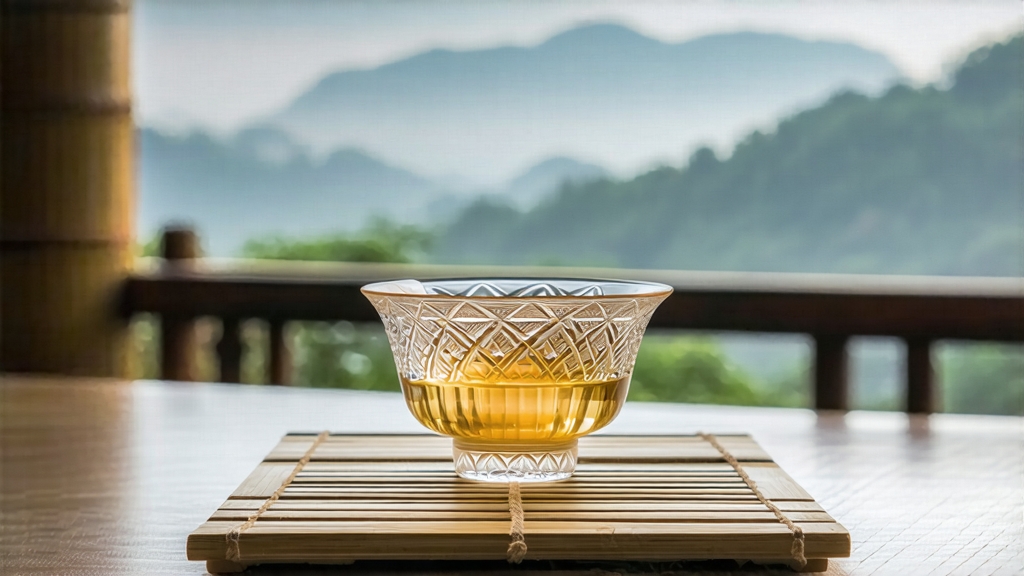
Among the six great families of Chinese tea, white tea is the least theatrical: no tossing in hot woks, no rolling drums, no charcoal roasting finale. Its drama is internal, a slow surrender of moisture under nothing more violent than sun and breeze. Within this minimalist repertoire, Bai Hao Yin Zhen—literally “White-Hair Silver Needle”—sits at the apex, the purest expression of “less is more.” Composed solely of unopened buds plucked for a few spring mornings each year, Silver Needle looks less like tea and more like a collector’s item: slim, silvery spears whose downy hairs catch light like frost on a spider’s web. To understand China’s most understated tea, one must follow the bud from mist-wrapped hillside to glass cup, tracing history, craft, and the quiet ritual that coaxes its fragrance into being.
Historical whispers
White tea’s documented story begins in the Song dynasty (960-1279), when the imperial court in Fujian demanded “tribute cakes” pressed from large white-leafed cultivars. Yet the loose, bud-only Yin Zhen we recognise today did not crystallise until the late 1700s, after the lifting of compressed-tea quotas and the rise of loose-leaf commerce. Fuding and Zhenghe counties—separated by a ridge of weathered granite—became the twin cradles. Local lore claims a drought in 1796 forced farmers to abandon leaf-plucking and collect only the drought-resistant buds; the pale liquor so delighted Canton merchants that Silver Needle was born of necessity. By 1885, specialised gardens of Fuding Da Bai (“Big White”) cultivar were established solely for this tea, and European ports began listing “Pekoe Points” at prices rivalling first-flush Darjeeling. The 20th century’s wars pushed white tea into obscurity, but the 2000s wellness boom rediscovered its high amino-acid count and delicate flavour, sending its value soaring faster than any other Chinese tea category.
Micro-terroir: why Fuding matters
Fuding lies on Fujian’s northeastern coast, where the East China Sea’s warm vapour meets the 1,000-metre Taimu mountain range. The resulting cloud blanket filters UV light, slowing photosynthesis and prompting the plant to hoard L-theanine, the amino acid responsible for sweet umami. Night temperatures drop sharply, forcing the bud to grow a thicker pubescence—those “white hairs” that act as natural insulation and, coincidentally, as flavour vaults rich in volatile terpenes. Sandy, acidic laterite soils drain quickly, stressing the bushes just enough to concentrate aromatic compounds without reducing yield. While Zhenghe Yin Zhen exists, its higher altitude and clay-loam soils yield a darker, slightly tannic cup; Fuding remains the benchmark for the luminous, water-colour brew that captivated emperors and, later, Instagram feeds.
Plucking etiquette
The picking window opens when the bud reaches 2.5–3 cm but before the first scale leaf unfurls—roughly mid-March to early April, always before Qingming festival. Experienced pickers use a “twist-lift” motion that snaps the stem without bruising; any compression triggers premature oxidation and the loss of fresh hay aroma. Baskets are woven from thin bamboo strips to maximise airflow, and buds are never piled deeper than 5 cm to prevent heat build-up. A skilled picker gathers barely 500 g of fresh buds in a day; 30,000 of them—five kilos—will shrink to just one kilo of finished tea. Such arithmetic explains why authentic Silver Needle costs more than its weight in silver during peak spring.
The craft of doing almost nothing
Once back at the cottage, the buds are “spread green” on bamboo trays called shaiqing, each tray holding no more than a thin hand-span. For the next 24–48 hours they rest in a shaded corridor where louvered walls admit indirect sun and mountain cross-breezes. Moisture falls from 75 % to roughly 20 % without any artificial heat; enzymes remain active, converting bitter catechins into softer theaflavins and releasing a spectrum of floral lactones. Master tea makers judge readiness by touch: a bud should snap, not bend, yet still feel cool—sign that internal moisture matches surface dryness. Final drying employs either charcoal embers at 40 °C or electric ovens at 50 °C, but only for 20 minutes; higher temperatures would caramelise sugars and